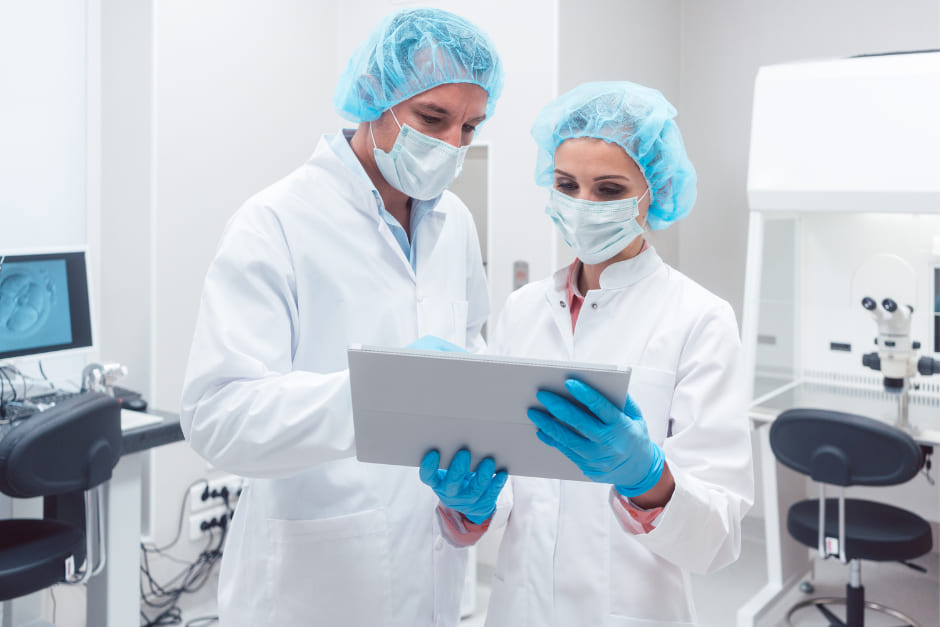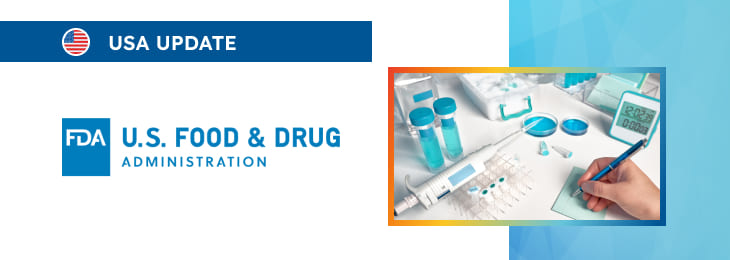The new article explains in detail the way chemical analysis should be conducted in order to ensure any and all key matters are addressed properly.

Table of content
The Food and Drug Administration (FDA or the Agency), the US regulating authority in the sphere of healthcare products, has published a draft guidance document dedicated to chemical analysis for biocompatibility assessment of medical devices. Once finalized, the guidance will provide an overview of the applicable regulatory requirements, as well as additional clarifications and recommendations to be taken into consideration by medical device manufacturers and other parties involved in order to ensure compliance.
At the same time, provisions of the guidance are non-binding in their legal nature, nor are they intended to introduce new rules or impose new obligations. Moreover, the authority explicitly states that an alternative approach could be applied, provided such an approach is in line with the underlying legislation and has been agreed with the authority in advance.
Chemical Analysis Strategy
According to the document, a robust chemical analysis plan is essential for accurately profiling extractables in a device. This plan should include justifications and explanations for the chosen analytical approaches.
In general, the strategy recommended is to use a non-targeted analysis to create an initial profile of extractables, followed by targeted analysis to identify and quantify specific chemicals of interest. The choice of methods and procedures should be thoroughly documented, and additional guidance can be found in Appendix C of the main document.

Non-Targeted and Targeted Analysis
Non-targeted analysis provides a broad overview of the chemical compounds present in the sample without prior knowledge of their identities. This is crucial for discovering unknown extractables that might be overlooked using a purely targeted approach.
Once the general profile is established, targeted methods can be applied to identify and quantify individual extractables that are of concern for the device’s biocompatibility.
Suitability of Detection Methods
As explained by the FDA, the choice of detection methods should ensure that a wide range of analytes, spanning various chemical classes and physical properties, can be effectively identified and quantified.
The following considerations are recommended for ensuring method suitability:
- Achieving Mass Balance: Analytical methods such as Gas Chromatography (GC), Liquid Chromatography (LC), and Inductively Coupled Plasma (ICP) Mass Spectrometry should be employed. However, achieving a perfect mass balance (100% of the extractables detected and quantified) is not expected because these methods have different sensitivities for various analytes.
- Chromatographic Resolution: Optimizing chromatographic conditions is necessary to resolve as many compounds as possible. The FDA has made available a preliminary dataset of Relative Response Factors (RRFs) for chemicals with diverse properties, which can aid in assessing the capability of analytical laboratories to detect potential extractables.
- Use of Multiple Detectors: Employing a variety of detectors, such as ultraviolet (UV), charged aerosol detector (CAD), and evaporative light scattering detector (ELSD), in conjunction with Mass Spectrometry (MS), is recommended. These detectors can help identify non-ionizable analytes that might be missed with standard MS techniques.
- Wide Mass Range: The analytical methods should cover a broad mass range to capture both low and high molecular weight analytes. This capability is crucial for detecting a diverse array of compounds that could impact the safety profile of the device.
- Feature Finding: Comprehensive discovery of analyte signals through manual or software-based feature finding is advised. For example, MS-based methods should detect all signals above the Analytical Evaluation Threshold (AET) to avoid missing any potentially harmful extractables.
Reference Standards
The FDA additionally emphasizes the key role reference standards play in ensuring the accuracy and reliability of chemical analyses.
There are three main types of reference standards used:
- Authentic Reference Standard: An authentic reference standard is a highly purified compound (typically > 99.5% purity) of known structure used for specific analytical purposes. This standard is essential for accurately identifying and quantifying a particular analyte of interest in a targeted analysis.
- Internal Reference Standard: An internal reference standard is spiked into the sample at a known concentration to monitor the consistency of the analysis. It is used to calibrate the response of the analytical instruments to the analyte within the sample matrix.
- Surrogate Reference Standard: A surrogate standard may not match the analyte of interest but can serve to demonstrate that non-targeted methods can accurately identify and quantify analytes with a broad range of properties and concentrations. Surrogate standards are often used when authentic standards are not available for some analytes.
The use of these standards helps to ensure that the analytical methods yield reliable and reproducible results, which is critical when establishing the safety of a device.
Calibration, Sensitivity, and Quantification
Quantification of extractables is achieved through the use of calibration curves. Calibration curves establish a relationship between the concentration of an analyte and the signal intensity detected by the instrument.
Depending on the availability of authentic reference standards, different approaches can be used:
- Fully Quantitative Analysis: When authentic reference standards are available, a fully quantitative analysis can be conducted using the calibration curve to calculate the exact concentration of the analyte in the sample.
- Semi-Quantitative Analysis: If an authentic reference standard is not available, surrogate reference standards can be used to construct calibration curves. In these cases, relative response factors (RFs) are applied to estimate the concentration of the analyte, leading to a semi-quantitative analysis.
- Sensitivity Assessment: The sensitivity of the methods, defined by the limit of detection (LOD) and limit of quantification (LOQ), should be established for each analyte. The LOD is the smallest concentration that can be reliably detected, while the LOQ is the lowest concentration that can be accurately quantified.
Overall, the goal is to achieve a high sensitivity to detect and quantify all relevant extractables within the device’s chemical profile.
Chemical Identification
The identification of chemical compounds within the extracts is critical for assessing potential safety risks. For each analyte that exceeds the reporting threshold (e.g., the AET), its chemical identity and the confidence level of the identification should be determined.
Confidence levels are classified into four categories:
- Unknown: The identity of the compound is not established.
- Tentative: The identification is based on spectral matching or other indirect evidence.
- Confident: The identification is highly probable but lacks confirmation through an authentic reference standard.
- Confirmed: The identity is verified using an authentic reference standard.
For a thorough Toxicological Risk Assessment (TRA), only confident and confirmed identifications should be used unless otherwise justified. Special considerations should be made when dealing with compounds that belong to a cohort of concern (e.g., known carcinogens or reproductive toxins).
These compounds must be identified and quantified even if their concentration is below the standard reporting threshold, as they may present a risk at lower levels.
Conclusion
In summary, a well-defined chemical analysis plan is essential for the safety evaluation of a device. Accurate chemical identification, combined with a clear understanding of each analyte’s potential hazards, establishes a strong basis for a comprehensive biocompatibility assessment.
How Can RegDesk Help?
RegDesk is an AI-powered Regulatory Information Management System that provides medical device companies with regulatory intelligence for over 120 markets worldwide. It can help you prepare and publish global applications, manage standards, run change assessments, and obtain real-time alerts on regulatory changes through a centralized platform. Global expansion has never been this simple.

